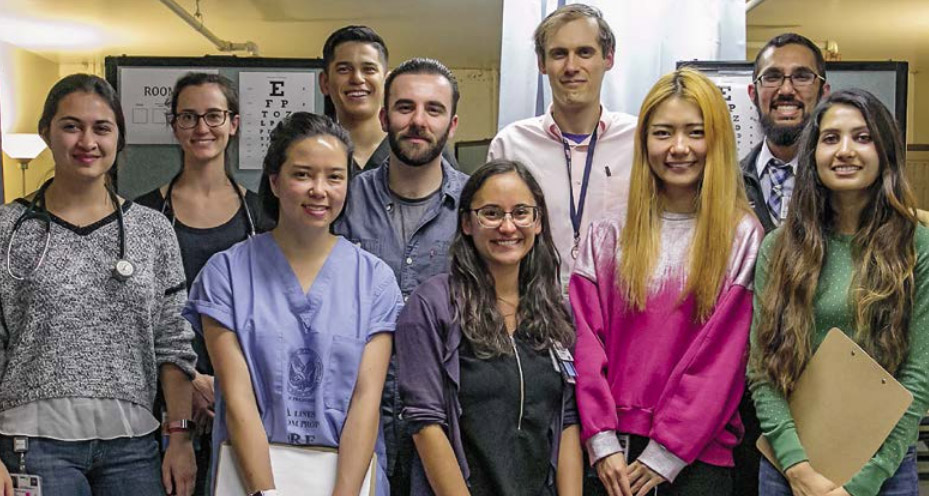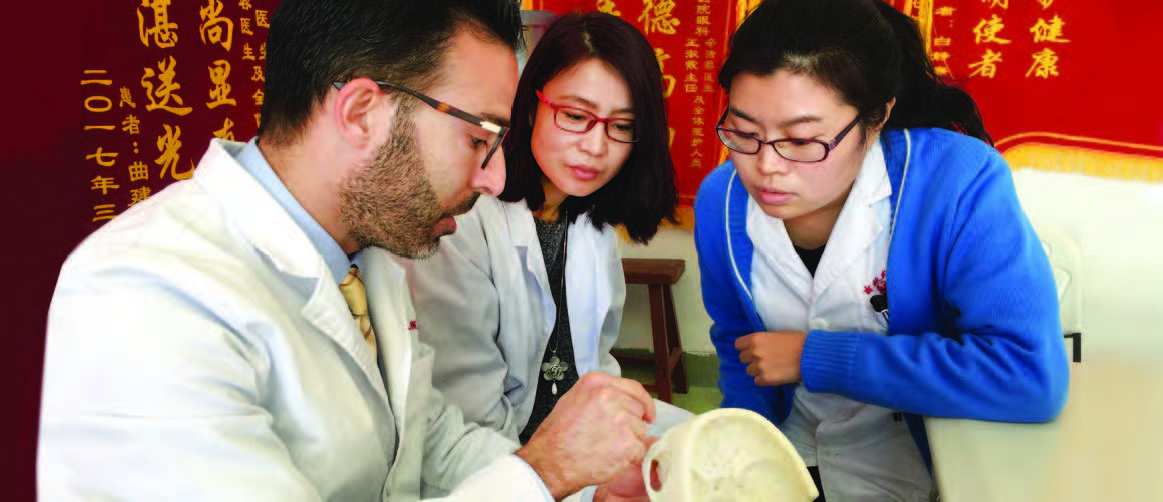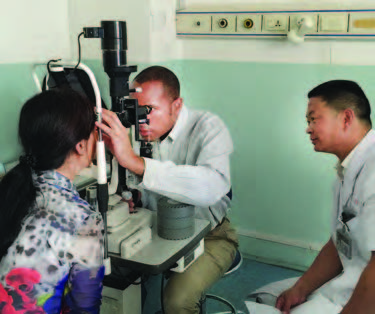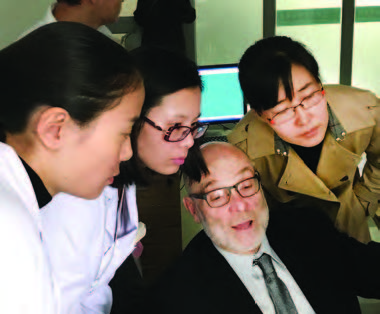A volunteer-run clinic helps shelter residents keep their sight.
”Whether crossing the street or trying to avoid trouble, poor vision intensifies the vulnerability of an already vulnerable population,” says ophthalmology resident Lauren Hennein, MD. When Dr. Hennein floated the idea for a shelter-based vision clinic two years ago, Alejandra de Alba Campomanes, MD, MPH, became an enthusiastic faculty sponsor. Dr. Hennein and medical student Ogonna Nnamani dug in to make it happen.
Training to Care
With The California Endowment’s $20,000 equipment gift to That Man May See, the monthly clinic opened in fall 2017. It joins other UCSF services at Division Circle Navigational Center, a shelter run by the St. Vincent de Paul Society in San Francisco’s South of Market area.
The clinic has no paid staff. A handful of medical and premedical students are led by Dr. Hennein and Mrs. Nnamani. Volunteers provide care under the supervision of ophthalmology residents, fellows, and faculty. Project Homeless Connect pays to have glasses made. Students learn to do intake, collect histories, perform comprehensive exams, coach patients on their conditions, and document next steps.
Dr. de Alba is thrilled. “Providing care at the shelter allows us to serve those in the most unstable circumstances,” she says. “Aspiring doctors are learning the value of community service as well as patient care and the tools of ophthalmology.”
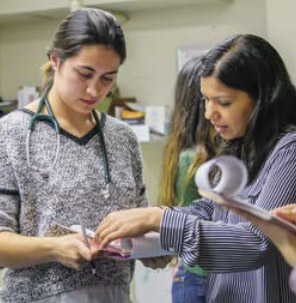
Connecting to County
The clinic is a bridge to sight-saving treatments at Zuckerberg San Francisco General Hospital and Trauma Center. Jay Stewart, MD, chief of ophthalmology there, saves appointments for patients referred from the shelter.
“Those already experiencing sight loss are the most motivated to follow up,” says Dr. Stewart. “We want to make it easy.”
Momentum and Hope
“Even though we want to serve more people, our first goal is to make the clinic sustainable,” says Dr. Hennein. “Eventually, we’d like to open our doors twice each month.” Right now, leaders hope to acquire a portable slit lamp to provide more comprehensive services.
Volunteering at the clinic is extremely popular. “It is inspiring to see young students’ eagerness to learn and their enthusiastic commitment to help in such a respectful, compassionate way,” says Dr. de Alba. “It gives me so much hope.”
Thanks to The California Endowment, That Man May See, and Akorn Pharmaceuticals for donations; additional faculty sponsors Drs. Stewart and McLeod; premedical student clinic director Kiki Spaulding, Project Homeless Connect’s Alison Van Nort, MSW, and faculty and student volunteers.

